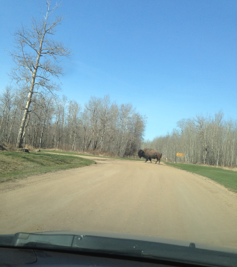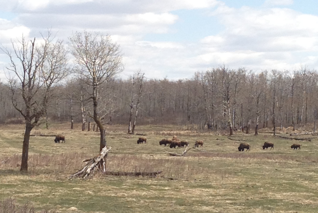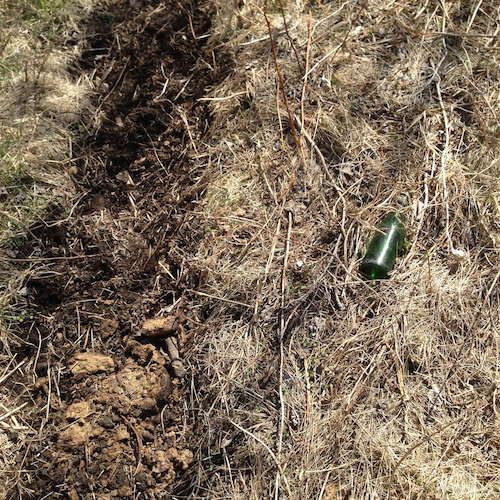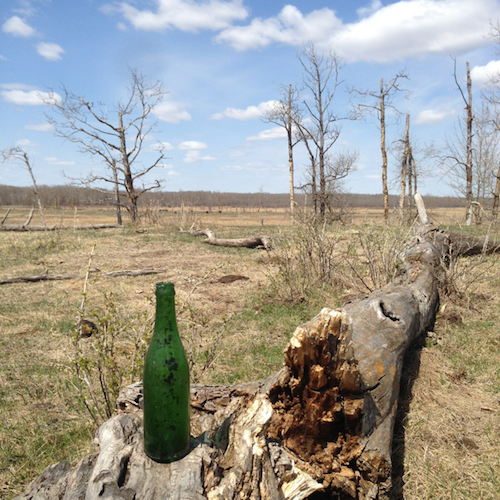City life is as much about moving through landscapes as it is about being in them. This is a critical point; not only does the city shape the way we move, but our movements shape the city in return. Charles Montgomery (p. 176)
Here’s the psychological appeal of the car: mastery. Charles Montgomery reports, in Happy City: Transforming Our Lives Through Urban Design, that when the road is clear, drivers of their own cars feel “much more in charge of their lives than transit users or even their own passengers (p. 179).” This is how our relationship with cars started, with a sense of freedom and control. Yet over time, this experience of freedom and speed, on open roads, is not the truth of cities: “The urban system neutralizes their power. Luxury and sports cars might still offer their drivers a status bump, but the car’s muscles cease to matter when it is surrounded by other cars (p. 179).”
These are important words: the car’s muscles cease to matter when it is surrounded by other cars.
The result is this: people are not happy on their commutes.
Montgomery has found that self-propelled commuters “report feeling that their trips are easier than the trips of people who sit still for most of the journey (p. 181).” He goes on to note that these are sentiments of people in American and Canadian cities, designed in ways that make walking and cycling unpleasant and dangerous. Further, in The Netherlands, “where road designers create safe spaces of bikes, cyclists report feeling more joy, less fear, less anger, less sadness than both drivers and transit users (p. 181).” He reaches this conclusion (p. 184):
- People are not maximizing happiness on their commutes.
- People are overwhelmingly choosing the most polluting, expensive and place-destroying way of moving.
How we move matters because it shapes who we are. Remember this: cities design our lives, and the city is a happiness project of our own creation. Our time in cars diminishes our happiness and the social fabric of our neighbourhoods. Further, “They are by far the biggest source of smog in most cities. They produce more greenhouse gas emissions per passenger mile than almost any other way of travelling, including flying by jetliner (p. 184).” We make our city habitats. We can remake our city habitats.
Here’s what Montgomery offers as a way to rethink mobility in cities; our approach to design needs to embrace and explore:
- Complexity in transportation and human experience (Eric Brittan via Montgomery, p. 198).
- Multiple modes of transportation. “Each of us has a unique set of abilities, weaknesses and desires. Each of us is compelled and thrilled by a unique set of sensations. Every trip demands a unique solution (p. 197).”
- Experimentation, thinking of the city as a laboratory that invites and rewards experimentation (p. 216).
- Physics and psychology of mobility (p. 216).
With the above, design principles emerge that generate happiness:
- Design for connectivity: more intersections mean more walking, and more disconnected cul-de-sacs mean more driving (p. 186).
- Design destinations within reach (p. 189).
- Feed active transportation and transit systems the resources they need. When starved, they are bound to disappoint (p. 193).
- Design choice into the city. Can you walk to work, or ride a bike? Can you catch a bus or train? Can you get to the doctor or a restaurant for supper without a car (p. 194)?
- Design for freedom for everyone, not just the brave (p. 211).
- Design for multiple modes of transportation. “Each of us has a unique set of abilities, weaknesses and desires. Each of us is compelled and thrilled by a unique set of sensations. Every trip demands a unique solution (p. 197).”
What’s in the way? The private car that uses 7.5 times more space than a person on a bus or a bicycle (p. 221). In part, it is the habits of professionals. It is also the choices we make as citizens.
The reasons why we like the car won’t go away – the perceived control of the car can also surface as real-time arrival data for bus/train users. As a psychological intervention, the wait feels shorter when you know what is happening, when (p. 202). We might also find the rewards of freedom from owning, when we experience the cooperative benefits of extreme sharing (bicycles, cars, public infrastructure). We simply need to build in the sense of control and freedom we desire into other modes of transportation.
We can all work on this: city hall and our public institutions, the business community, community organizations and citizens. This is the new mastery: choosing the city we want to generate together.
We can choose happy mobility.
We can choose a happy city.
We can choose to build the city to save the world.



